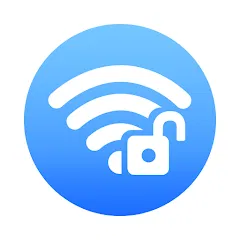TeamViewer QuickSupport
About this app
Are you seeking a convenient method to offer remote support to your team or clients?
Explore the functionalities of the TeamViewer QuickSupport app, which includes remote support capabilities, screen sharing features, and file transfer functionalities.
Receive a detailed guide on using the application effectively, along with the advantages it offers, such as enhanced efficiency and cost savings.
Additionally, we will discuss potential limitations, such as security concerns and restrictions of the free version.
Continue reading to gain further insights into this useful tool.
What is TeamViewer QuickSupport?
TeamViewer QuickSupport is a remote support application designed to facilitate quick and effective assistance to remote devices. This application functions as a secure and convenient tool for diagnosing technical issues and enabling remote control access to deliver efficient support solutions.
The utility of the application is particularly advantageous for IT professionals and support teams who are tasked with remotely troubleshooting issues or providing assistance to clients and colleagues. Through QuickSupport, users can effortlessly establish a secure connection with remote devices, enabling them to observe and manage the screen, exchange files, and identify problems from a distance. By leveraging this application, the support process is streamlined as it diminishes the necessity for physical presence, consequently conserving time and resources. Additionally, users can avail themselves of real-time updates and notifications, rendering it a comprehensive tool for remote support services. A multitude of favorable reviews underscores the user-friendly nature and dependability of QuickSupport, underscoring its efficacy in efficiently resolving technical issues.
Features of TeamViewer QuickSupport App
The TeamViewer QuickSupport App has been outfitted with a variety of features that are intended to improve performance, deliver a user-friendly interface, guarantee seamless connectivity, and provide compatibility across a range of devices and operating systems.
Remote Support Capabilities
TeamViewer QuickSupport stands out for its exceptional remote support capabilities, specifically designed to cater to a diverse range of mobile devices through its robust features. Emphasizing stringent security measures, the platform ensures a user-friendly experience for both support providers and recipients.
The seamless compatibility of TeamViewer QuickSupport with various mobile platforms positions it as a preferred solution for delivering efficient remote support. Users benefit from easy access to key functionalities like screen sharing, file transfer, and remote control, all while adhering to rigorous security protocols.
The intuitive interface of TeamViewer QuickSupport further elevates the support process, enabling support providers to address issues promptly and efficiently. By emphasizing security and user-friendly features, TeamViewer QuickSupport emerges as a dependable choice for remote assistance across multiple devices.
Screen Sharing and File Transfer
TeamViewer QuickSupport facilitates seamless screen sharing and file transfer functionalities, enabling efficient remote desktop access and fostering smooth connectivity and integration for collaborative work environments.
This software tool is specifically designed to streamline the process of sharing screens and transferring files between devices. It simplifies collaboration among users regardless of their physical locations. By utilizing TeamViewer QuickSupport's remote desktop capabilities, users can remotely oversee and control another device, troubleshoot technical issues, and offer real-time support.
The robust connectivity options provided by TeamViewer QuickSupport ensure users can effortlessly establish secure connections across various platforms and devices, thereby enhancing productivity and streamlining workflows. The tool's integration capabilities further enable seamless collaboration and resource sharing, making it a valuable asset for both businesses and individuals.
Compatibility with Different Devices
TeamViewer QuickSupport is distinguished by its compatibility with a wide range of devices, providing support across multiple platforms, connectivity to multiple devices, and features that accommodate various system requirements.
Regardless of whether one is utilizing a Windows PC, a Macbook, an Android smartphone, or an iOS tablet, TeamViewer QuickSupport seamlessly integrates across diverse operating systems. The effectiveness of its cross-platform functionality lies in its capacity to connect users irrespective of their device of choice.
TeamViewer QuickSupport enables users to effectively address issues on PCs, laptops, tablets, or mobile phones, establishing itself as a versatile tool for both technical support professionals and individuals. Its accessibility features ensure that users with differing needs and preferences can navigate the platform with ease, heightening the overall user experience.
How to Use TeamViewer QuickSupport App
Achieving proficiency in utilizing the TeamViewer QuickSupport App entails a smooth installation procedure, comprehension of its fundamental features, and diving into available resources such as user manuals and tutorials to optimize its capabilities.
Step-by-Step Guide
A comprehensive approach to utilizing the TeamViewer QuickSupport App involves consulting user manuals, tutorials, FAQs, and exploring a range of support avenues to enhance user experience effectively.
User manuals serve as invaluable resources, furnishing detailed guidelines on navigating the app's functionalities and resolving prevalent issues. Tutorials offer visual aids and step-by-step elucidations to facilitate new users in swiftly acclimating to the app. The FAQs section is dedicated to tackling commonly encountered questions, proffering resolutions to frequently posed queries. Delving into the support options permits users to solicit aid from customer service representatives or partake in community forums for peer-to-peer assistance. By judiciously leveraging these resources, users can optimize their interaction with the TeamViewer QuickSupport App.
Benefits of Using TeamViewer QuickSupport App
Employing the TeamViewer QuickSupport App provides a multitude of advantages, such as:
- Increased efficiency
- Cost-effectiveness through remote assistance
- Enhanced user experience
- Elevated levels of customer satisfaction
Efficiency and Convenience
The TeamViewer QuickSupport App offers significant advantages by enhancing work productivity, facilitating remote assistance, promoting collaboration, and delivering robust meeting support features for seamless interactions.
This versatile application enables users to remotely troubleshoot technical issues, leading to swift resolutions and reduced downtime. Its collaborative functionalities allow coworkers to work together in real-time, resulting in more efficient project completion. Additionally, the meeting support capabilities of the TeamViewer QuickSupport App provide users with tools to effortlessly host virtual meetings and presentations. This comprehensive solution greatly enhances communication and teamwork among users, irrespective of their physical location, establishing it as an essential tool for contemporary workplaces.
Cost Savings
Through the utilization of the TeamViewer QuickSupport App, individuals can realize substantial cost savings in various business and personal contexts, facilitated by the availability of adaptable licensing options and subscription plans tailored to their specific requirements.
In the sphere of business applications, organizations stand to gain from the application by diminishing expenses related to travel and on-site troubleshooting time, thanks to the remote support and collaboration functionalities it offers. This not only augments operational efficiency but also reduces downtime, thereby enhancing overall productivity. The app's customizable licensing structures enable companies to streamline their expenses by remunerating solely for the requisite features and user count, thus circumventing superfluous costs. Moreover, the subscription plans afford scalability, permitting enterprises to modify their usage in accordance with their needs, further bolstering cost-efficiency.
Potential Drawbacks of TeamViewer QuickSupport App
While the TeamViewer QuickSupport App provides a wide range of functionalities, users may come across certain drawbacks including security concerns, restrictions imposed by the free version, privacy issues, and considerations regarding data encryption.
Security Concerns
One of the primary considerations associated with the TeamViewer QuickSupport App pertains to the implementation of robust security measures. These measures encompass effective session management, granular permission control, customization options, and configurability features aimed at bolstering data protection.
The customization capabilities inherent in the application enable users to adjust settings in accordance with their individual security requirements. This includes the ability to impose restrictions on access to specific features and establish time constraints for sessions. Furthermore, the permission control functionalities allow administrators to delineate the individuals authorized to initiate, monitor, or participate in remote sessions, thereby augmenting the overall security posture.
Moreover, the configurability features provide users with flexibility in configuring secure connections, encryption protocols, and authentication mechanisms. These elements play a vital role in ensuring the safeguarding of sensitive information throughout remote access sessions.
Limitations of Free Version
Users of the complimentary version of the TeamViewer QuickSupport App may encounter limitations with regard to the range of connectivity options, configuration of network settings, access to timely software updates, and patches that are essential for improving performance and security.
For example, individuals utilizing the free edition of the TeamViewer QuickSupport App may discover that they are unable to personalize intricate network settings to optimize the quality of connections, thereby impeding the smoothness of remote assistance sessions.
Furthermore, the absence of automated software updates in the no-cost version could result in compatibility issues with newer operating systems or security vulnerabilities that have been resolved in subsequent releases. Consequently, users may be required to manually check for updates and patches, necessitating heightened vigilance and a greater investment of time.
Related Apps
-
ViewpointsGETTools and Productivity
-
Straight Talk CloudGETTools and Productivity
-
Wifi PasswordGETTools and Productivity



















